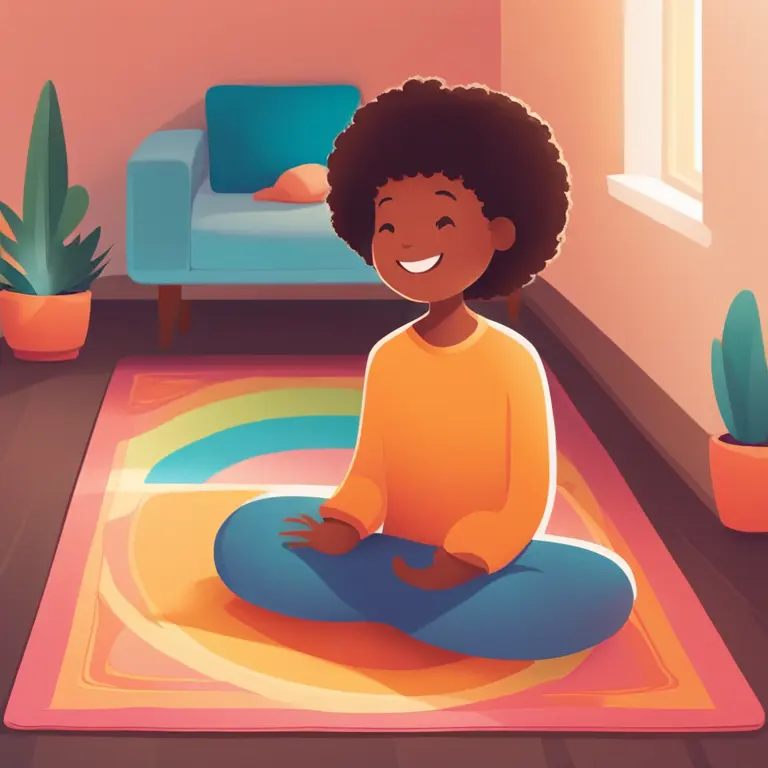
Gentle Nighttime Meditation for Children
Help your child embrace a restful night's sleep with effective meditation techniques tailored for young minds.
article by Hina Kurosawa
Introduction to Child-Friendly Meditation
Welcome to a serene journey for our youngest dreamers! With our bustling world growing even more connected and sometimes chaotic, establishing a nighttime routine with meditation can be a wonderful tool for children. In this article, we delve into the tranquil realm of child-targeted meditation techniques designed to promote restful sleep. Today’s youngsters face stimuli from technology and social pressures more than ever before, making the need for mindfulness techniques, which can be impactful even amidst the digital age of 2024, increasingly valuable.

The Benefits of Meditation for Sleep
Meditation has long been recognized for its calming effects on the mind and improvements in sleep quality. For children, whose days are often filled with learning and energetic play, meditation can serve as a gentle transition to the world of dreams. Integrating mindfulness and meditation into your child's nighttime routine can help them manage stress, decrease anxiety levels, and enhance overall sleep quality. With growing research on childhood mental well-being, meditation becomes not just a trend but an essential component of healthy lifestyle habits.

Setting the Scene for Slumber
Creating a conducive environment is paramount when it comes to meditating for better sleep. Start by dimming the lights and ensure the room is at a comfortable temperature. A quiet space free of gadgets and distractions allows your child to focus on the meditation process. Introducing elements such as soft blankets or a plush toy can also provide a sense of security and calm. In 2024, technology-assisted meditation with age-appropriate guided sessions can also be incorporated, provided it's kept to a minimum and not immediately before bed.

Simple Meditation Techniques for Young Minds
Engaging children in meditation can often be achieved with simple and interactive techniques. Start with guided visualizations; this could be a journey through a calming forest or drifting along a gentle stream. Breathing exercises are equally valuable, teaching children to inhale deeply and exhale slowly. Incorporating gentle music or nature sounds can further enhance the experience. Maintaining a regular meditation schedule helps strengthen the sleepy-time association, making the practice an anticipated part of their evening.

Overcoming Common Challenges
It's important to recognize that not all children will take to meditation immediately. Some may find it difficult to sit still or keep their mind from wandering. Here, the key is patience and consistency. Short sessions that last a few minutes can gradually increase as the child becomes more comfortable with the practice. In 2024, app-based meditation resources catered to children can provide interactive and gamified experiences that make the process enjoyable and engaging, helping to overcome some of these hurdles.
Cultivating a Lifetime of Mindfulness
By introducing meditation to children at a young age, we plant the seeds of a lifelong mindfulness practice. As they grow, the skills they develop through meditation—such as attention regulation, self-awareness, and emotional control—can be invaluable throughout their adolescent and adult lives. Meditation isn't just about sleep; it's about equipping our children with tools to navigate life's ups and downs with grace and resilience. As we continue into 2024 and beyond, these practices may become as essential as academic learning in nurturing well-rounded and mindful individuals.
Published: 1/14/2024
Modified: 1/15/2024
More predictions
Come back here soon to learn more about yourself and your future


Mindfulness Meditation: A Handbook for High Schoolers
Discover how mindfulness meditation can benefit high school students, enhancing focus, reducing stress, and promoting overall well-being.


Discovering Life with Meditation Mantras
Delve into the transformative power of meditation mantras to harmonize your mind, body, and spirit for a tranquil existence.


Mindfulness Meditation Basics for First Graders
Introducing foundational mindfulness meditation practices to instill calm and focus in first-grade students.